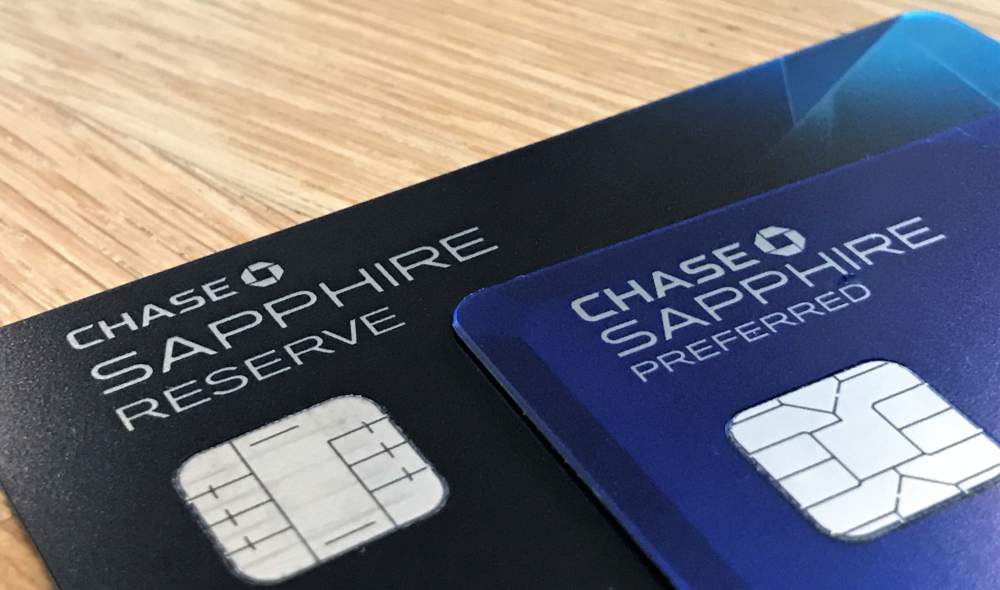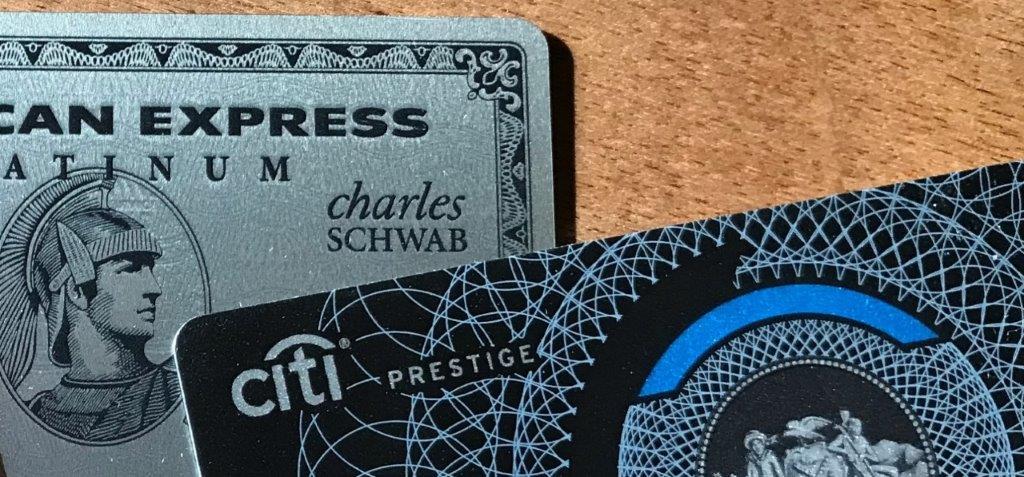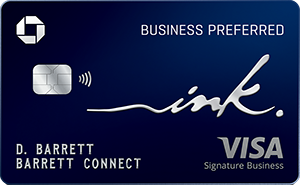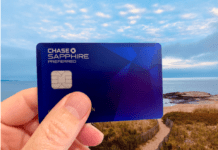With the Sapphire Reserve card currently offering a bigger than usual welcome bonus (click here for current details), I realized that it was past time to revive this post. If you want the ability to transfer Chase Ultimate Rewards points to hotel and airline partners then you’ll need the $550 Sapphire Reserve card, the $95 Sapphire Preferred, or the $95 Ink Business Preferred. In this post you’ll find a side by side comparison of benefits, travel & purchase protections, and more.

When the Sapphire Reserve card first debuted, it was clearly a better choice than the Sapphire Preferred for most of us. The Chase Sapphire Reserve offered 3X travel & dining vs. the Preferred card’s 2X. The Sapphire Reserve offered (and continues to offer) 1.5 cents per point value towards travel vs. the Preferred card’s 1.25. And the Reserve offers a slew of benefits not available to Preferred cardholders.
Initially, the Sapphire Reserve cost $450 per year, but offered an automatic $300 travel rebate. This made it seem like a $150 card to those of us who easily earned the travel rebate without even trying. In this light, the $95 Sapphire Preferred card didn’t fare well in comparison. After all, with only net $55 per year extra, you could get better point earnings, better point value, and better perks.
Things changed when Chase increased the Sapphire Reserve annual fee to $550. Now the Sapphire Reserve is like a $250 per year card after the $300 rebate*. That makes it substantially more expensive than the Sapphire Preferred. Plus, Chase increased the Sapphire Preferred card’s dining earning to 3x. Given these changes, is the Sapphire Reserve still worth the premium? Or, are we better off with the Sapphire Preferred? How about going with the Ink Business Preferred instead?
* Travel expenses that are rebated do not earn rewards. This means that the true effective rebate is a bit less than $300 and it might be better described as a $265 per year card after rebate… but that gets unnecessarily complicated.
Welcome Bonuses
Here are the current welcome bonuses for each card in this round-up:
| Card Offer |
|---|
100K points ⓘ Affiliate 100K after $8K spend in 3 months$95 Annual Fee Recent better offer: 80K after $5K spend. Many preferred the 80K offer due to the much lower spend requirement |
60K points ⓘ Affiliate 60K after $4K spend in 3 months$95 Annual Fee Alternate Offer: There may be elevated offers available by applying in-branch A similar offer with the first year annual fee waived may be found in-branch. YMMV. |
65K Points ⓘ Affiliate 65K after $4K spend in 3 months$550 Annual Fee Alternate Offer: 70K after $4K spend showing on some accounts when logged-in to Chase Recent better offer: Expired 12/1/22: 80K after $4K spend |
Annual Fee & Statement Credit Comparison
| Sapphire Reserve | Sapphire Preferred | Ink Business Preferred | |
|---|---|---|---|
| Annual Fee | $550 | $95 | $95 |
| Authorized User Fee | $75 | $0 | $0 |
| Annual Travel Rebate | $300 | $50 towards hotels booked through Chase.* | N/A |
* While I think it is safe to assume that Sapphire Reserve cardholders will easily earn the $300 travel rebate each year, I don’t expect most Sapphire Preferred cardholders to spend $50 or more on hotels through the Chase portal in order to get the Sapphire Preferred’s $50 rebate.
Perk Comparison
I’ve listed below only the perks I consider most valuable. For full details about card perks and more, see our guides to Chase Sapphire Reserve, Chase Sapphire Preferred, and Ink Business Preferred.
| Sapphire Reserve | Sapphire Preferred | Ink Business Preferred | |
|---|---|---|---|
| No foreign transaction fees |
Yes | Yes | Yes |
| Transfer points to partners: Transfer points 1 to 1 to a variety of airline and hotel programs | Yes | Yes | Yes |
| Point value towards travel: When booking travel through Ultimate Rewards, points are worth more than 1 cent each. | 1.5 cents per point | 1.25 cents per point | 1.25 cents per point |
| Point earnings for travel spend |
3X | 2X | 3X |
| Point earnings for dining spend | 3X | 3X | 1X |
| Point earnings for shipping, internet, cable, phone, and advertising with social media sites | 1X | 1X | 3X |
| Priority Pass Airport Lounge Access: Free entry for cardholder and up to two guests. Unlike Priority Pass memberships issued by American Express, this version includes Priority Pass restaurants. | Yes | N/A | N/A |
| Global Entry or TSA Pre✔® Fee Credit: Receive a statement credit of up to $100 every 4 years as reimbursement for the Global Entry or TSA Pre Check application fee charged to your card. | Yes | N/A | N/A |
Travel Protection Comparison
Both cards offer travel protections for travel paid in full or in part with your Sapphire card. Here is a high level comparison…
| Sapphire Reserve | Sapphire Preferred | Ink Business Preferred | |
|---|---|---|---|
| Primary Car Rental Coverage | Yes | Yes | Yes (within the U.S. it is primary only when renting for business) |
| Roadside Assistance | Free 4 times per year | Requires paying fee for each service | Requires paying fee for each service |
| Trip Cancellation and Interruption Coverage | Up to $20K per trip | Up to $20K per trip | Up to $5K per trip |
| Trip Delay Insurance | 6 hour delay | 12 hour delay | 12 hour delay |
| Lost Luggage |
Yes | Yes | Yes |
| Baggage Delay |
Yes | Yes |
Yes |
| Travel Accident Insurance | Yes | Yes | Yes |
| Emergency Evac & Transport | Up to $100K | N/A | N/A |
| Emergency Medical & Dental |
Up to $2,500 | N/A | N/A |
Clearly the Sapphire Reserve has the best travel protections. That might not matter to you at all if you tend to buy trip insurance anyway. In my case it’s meaningful because I tend not to buy trip insurance and so I’m happy to have the additional automatic coverage.
Purchase Protection Comparison
All three cards offer purchase protections for purchases made with the card. Here’s a high level comparison…
| Sapphire Reserve | Sapphire Preferred | Ink Business Preferred | |
|---|---|---|---|
| Extended Warranty: Extends the time period of U.S. manufacturer’s warranty by an additional year, on eligible warranties of three years or less. | Yes | Yes | Yes |
| Damage, Theft, Loss Protection: Covers your new purchases for 120 days against damage, theft or accidental loss. | Max $10K per claim | Max $500 per claim | Max $10K per claim |
| Return Protection: You can be reimbursed for eligible items that the store won’t take back within 90 days of purchase. | Max $500 per item, $1,000 per year | N/A | N/A |
| Cell Phone Protection: Reimburses accidental cell phone damage, theft, or loss | N/A | N/A | $100 deductible; Up to $600 per claim. |
The Sapphire Reserve offers better purchase protections across the board than the Sapphire Preferred. The Ink Business Preferred, though, holds its own with the Sapphire Reserve. While the Ink card doesn’t offer return protection, it does offer cell phone protection, which is something the Sapphire Reserve doesn’t offer.
Comparison Summary
Here now is a high level comparison of the three cards based on the above more detailed comparisons…
| Sapphire Reserve | Sapphire Preferred | Ink Business Preferred | |
|---|---|---|---|
| Annual Fee |
$550 | $95 | $95 |
| Authorized User Fee |
$75 | $0 | $0 |
| Travel Rebate |
$300 | $50 Hotel | N/A |
| Point value towards travel |
1.5 | 1.25 | 1.25 |
| Point earning for travel |
3X | 2X | 3X |
| Point earning for dining | 3x | 3x | 1x |
| Misc other perks | Better (Priority Pass for example) | Limited | Limited |
| Travel protection |
Best | Good | Good |
| Purchase protection | Better (return protection) |
Good | Better (cell phone protection) |
Deciding between these and other cards

This post was specifically designed to compare Chase Ultimate Rewards cards that allow transferring points to airline and hotel partners. If you’re interested in looking more broadly at which cards are worth their annual fees, please see: Which Premium Cards are Keepers?
My Take
I highly value the ability to earn 3x for travel spend. That eliminates the Sapphire Preferred from contention. So, then, the question for me is whether to keep the Sapphire Reserve or get the Ink Business Preferred? Between the two, the Sapphire Reserve offers better travel protections and so I’ve decided to stick with the Sapphire Reserve. For my full thoughts about this, see: Chase Sapphire Reserve: Should I keep it?








Great article and podcast on the topic. I want to comment specifically on the Reserve vs. the Ink Business Preferred since they both give 3x points on travel (which I consider really important over 2x since I book a lot of adventure travel and group tours).
The Ink card only gave me a credit limit of $7000, while my CSR has a credit limit of $35,000, despite reporting the same income amount for both. I have tried raising the business account limit without success. Assuming someone really values the incremental 3x points over 2x, it’s not hard to imagine that credit limit being a problem for a long cash-pay trip, an expensive guided tour, an adventure trip, or safari.
If I was abroad, I just wouldn’t want to worry about reaching the limit and not having a back up. I’ve found Chase to be really stingy with limits on sole proprietorship business cards (all of mine are $5-7k credit limit) in contrast to all of my Chase personal cards which are $25k and up! Anyone else have data points on this? Thanks!
“I highly value the ability to earn 3x for travel spend.” I really struggle with the high value placed on the CSP or CSR, especially when it comes to spend. For someone just starting out in the game, or someone who actually spends a lot on travel (for work, maybe?) and doesn’t want to have more than one CC, then there is value here. But for many of us in the game, the amount of spend we put on travel is largely limited to award fees.
I pay for most of my travel with points. Points earned from paying award fees is largely negligible. If I have to pay for airfare (rarely), I can use my Amex Platinum (5x). Hotels are usually put on a co-branded card. Dining is put on the Amex Gold (4x).
Where the spend starts coming into play is when we’re talking car rentals, tolls, parking, and the other things that fall under travel, but will probably add up to very little compared to the earning antics that many of us use to rake in URs. A person could use the Freedom Unlimited (1.5x) or other 2% card and not miss too much off the CSP, and pair it with discounted Uber/Lyft gift cards to save more than the value of the points earned.
IMO, the earning power of the CSR is not strong enough for people who don’t travel for work to justify the annual fee. The $300 credit is already paid for out of your pocket with the annual fee, so it’s not like you’re getting free travel.
However, I value the CSP for
it being the gateway drugthe ability to transfer UR (earned from Freedoms and Ink Cash) to partners, and the trip & car rental insurance. And that’s why I keep it.The CSR’s ability to earn 3x on travel really shines when traveling internationally. Between the various forms of local transit, long distance trains, etc, local hotel chains, and the CSR’s wide interpretation of what constitutes “travel”, CSR has been a real winner. Chase Freedom Unlimited and some other cards that charge a foreign transaction fee are not even in my wallet when I leave the US.
This is a very good and very useful article / update. Thanks!
I wonder if you have any thoughts on rotation possibilities, similar to those in your article on how to keep an Amex Platinum going via rotation among flavors (Vanilla, Business, Schwab, Morgan). Here you have two cards that are hard to churn (CSR and CSP) and whose bonus dates affect bonuses on the other, but one (Ink Business Preferred) that is independent of the other two and that I believe (but am not sure) can be re-applied for on something less than a 48 month cycle.
I bring this up because I have been mulling it over since getting a CSP when the bonus was 80K (plus 15K to P5 for referral) … and, since then, I have been wondering whether I should close (or downgrade) my long-standing Ink Business Preferred when its AF hits. Idea being that the biggest draw of both cards is maintaining the Chase -> Hyatt exchange, and I only need one card for that (as per your article). That got me thinking that maybe this was a good kick in the pants to start a slow-speed churn with the Ink Business Preferred.
Add in $60/year of Door Dash for the Sapphire Reserve?
And $15/month for Instacart, and $10/month for GoPuff (but I find that hard to use as they don’t deliver where I live, but have used it on multiple trips)!
The And $15/month for Instacart is a great benefit
Very good summary, and I still have our CSR after the annual fee price. Mainly its for the trip protection which is top of its class and the Warrenty. I have used it twice including an expensive dishwasher, they made me go through hoops but they did cover it all.
With the 10% “rebate” at the end of the year for the CSP, I consider the earn rates to be 3.1x for dining, 2.1x for travel, and 1.1x for everywhere else. For me, that makes the CSP the earn winner for both dining and everywhere else. Is there a reason that you did not consider this “rebate” in your comparison? Now for me, I have the CSR for the higher travel and better protections and perks, but it does make the CSP a much closer contender. Just my two cents.
[…] –> Chase Sapphire Reserve vs Preferred. Which is worth the price? […]
I’m still happy with my CSR, but the two new benes are useless and kind of insulting. I too still have my AAA membership plus MedJet emergency medical evac insurance. MedJet saved my sanity in Paris 5 years ago, not to mention taking extremely good care of my husband and his broken hip. I use the enhanced redemption bene often, so the CSR will remain king of my wallet in spite of the annual fee raise.
The redemption value of cashing out the points and investing them should not be based on interest earned in a cd or savings account as those rates are minor. You should use the average long term return of the S&P500 which from January 2010 to January 2020 was 11.36% annualized plus dividends or 13.52% with dividends reinvested. This week knocks down that annualized return by 1% and of course could reverse to new records in 4 months. So in 2 years basically that 1 cent cash out is 1.25.
I myself faced this dilemma with Amex MR. The transfer partners theoretically yield higher redemption value for premium airlines and even Air France with their crazy pricing compared to United Polaris from JFK. But the trade off is schedule, risks of an award booking vs cash booking, and traveling with other people on different reservations in cash. A lot of airlines have decent business fares to push that average .02 benefit to .013-.016. I then prefer using the Amex portal. But with Corona and not planning to travel this year and my first trip next year not being on my dime cashing out the MR at 1 cent makes sense. 1 cent today is worth more than 1 cent next year.
Just read the first paragraph of this one here in October 2022, and had a good laugh. You got to take the good with the bad!
Great summary. This is the first time I have seen it broken down in such detail. I have had the preferred for a couple of years, as has my wife. We did them separately for the bonuses, but will cancel wife’s at the next annual fee date. Does it make more sense to you to upgrade mine now or to wait until the wife is eligible to get the reserve and the sign up bonus?
I guess what I am really asking is “If I think the reserve is worth the annual fee, is upgrading from preferred the way to do it?”
The nice thing about upgrading is that it doesn’t prevent you from getting the signup bonus in the future. So, consider doing it this way:
1. Upgrade your card
2. Downgrade your wife’s card to a no-fee Freedom or Freedom Unlimited card
3. Once your wife is 48 months from having received the previous signup bonus, have her sign up for the Sapphire Preferred again for the 60K bonus. She can then cancel or downgrade after a year.
4. If you want another signup bonus after 48 months from your previous bonus, you can cancel or downgrade your Reserve card to a no-fee Freedom. Wait a few weeks then sign up for the Reserve for the 50K bonus.
Thanks for the helpful and detailed answer! Now I just need to confirm that i can easily use the $300 travel credit and the doordash…
Thanks again!
I just can’t wrap my head around your valuation of the 1.5 cpp benefit. Redeeming at 1.5cpp through the travel portal is a pretty poor redemption value, compared with transferring to travel partners. Is not lowering the floor of the worst case redemption option to 1.25cpp really worth $300?
I get your math of how you got to $300, but if you didn’t have the CSR, are you still going to redeem through the travel portal at 1.25cpp? Probably not. Instead, you are likely going to transfer to travel partners much more often. So therefore, you can’t credit that entire 0.25cpp difference to the valuation of that benefit. You aren’t losing $300 in benefits if you wouldn’t otherwise book at 1.25cpp.
This is a really great question. To understand my valuation, you need to understand some background with my experience with Chase points. Over the years I’ve accumulated more and more of them and hoarded them to be used only for great transfer partner awards. At some point it suddenly dawned on me that at the rate I was spending those points, I would never get anywhere near using them up. Points that could be worth over 2 cents each are really worth nothing at all if they’re never used. So I decided to start using the points for 1.5 cents towards travel whenever convenient (that’s almost always when I’m buying flights rather than booking awards. Often it is for reimbursable travel, so I’m effectively cashing out at 1.5).
If I didn’t have the Sapphire Reserve, you’re right, I probably wouldn’t “cash out” at 1.25 because it would be too painful. But the result would be that I’d have millions of points sitting there doing nothing. That’s a bad result too.
Anyone who regularly burns through their points by transferring to partners shouldn’t value the 1.5 cent feature at all.
I agree that the 1.5cent redemption rate hasn’t been very useful to me. I’ve used it once, to avoid paying cash at a hotel in Hawaii, it was either buy via Chase or pay cash outright, no other points options for me at that hotel. Since I don’t accrue a ton of UR points I hoard them for partner transfers.
I’m curious if having the Amex Platinum and their new Travel Protection will make it even easier to downgrade from the Reserve to the Preferred.
It doesn’t change things for me since I’ve had the Ritz card to fall back on anyway and it has equivalent travel protections to the Reserve.
I’d like to see one more step – a brief discussion of which one might be better to sign up for NOW (i.e. signup bonus, predictions based on historical bonuses, timing to maximize any calendar year benefits etc.
I’m sure most readers already have one of the cards but there must be a decent subset of readers who are about to sign up for one of them for the first time. Or even more likely (given your somewhat advanced readership) a group of readers finally four years past their last Sapphire bonus and approaching 5/24 for the first time in many years (such as yours truly).
Good suggestion. The signup bonuses have been stable for quite a while: 60K for Preferred vs 50K for Reserve. I doubt that will change anytime soon. So, for most, it makes sense to start with the Preferred and later upgrade if they prefer to have the Reserve
OK thanks. I downgraded my CSP to CFU perhaps 2 months ago. Is there a minimum time period I need to wait before getting a new CSP (as mentioned previously it has been over 4 years since I got the CSP bonus).
I barely broke even at $450 a year. At $550 (-$60 doordash) a year, I might have to downgrade when the new fee comes up for me in Aug.
Me too Aug wait to see what pops up and it’s prorated per month so cancel IF it doesn’t work .
I think the point is , for Chase, you’re supposed to lose money on the fee , not break even or have a profit.
However, I’m totally down with (or up with) making money off Chase. I’d bet Door Dash benefit costs them almost nothing in the hope you’ll use it more
Just throwing my opinion out there, but I value the $300 credit at $285 because it takes zero additional effort for me to use (I would charge all travel to Reserve anyway for trip protection), so the only loss vs. the full $300 value is the value of rewards I might earn on another card. Generally speaking, the best alternative would give me in the neighborhood of 5% in cash/points back (and with lesser travel protection), so $285. $270, or 10%, is more than I would discount.
Obviously subjective, and there’s no reason you need to listen to me, but figured I’d offer my points of view in case the cards ever move closer enough in value that the $15 difference plays a factor into whether to keep/cancel.